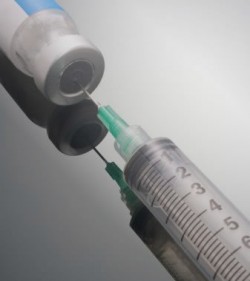By Anthoney J. Andersen – Steroidal.com
It can be said that testosterone is what makes men, men. It provides the characteristics of a deep voice, contributes to large muscle growth, and produces body and facial hair –distinguishing them from women.
However, as men get older, it becomes increasingly more difficult for their bodies to sustain high levels of testosterone – which in turn – causes the decrease in strength and muscle mass.
So, you’re probably wondering, “What can I do to help my body maintain some of its strength and endurance as I get older?”
The following information breakdowns exactly what happens to men’s bodies/muscle mass as they age, and will explain ways to help preserve some of the strength and muscle tone that you worked so hard to achieve.
TESTOSTERONE 101
Testosterone is a hormone that is found in humans, as well as other animals. In men, testosterone primarily comes from the testicles – and in women – it’s produced from the ovaries (but in much smaller amounts), according to Healthline.com.
Testosterone production starts to increase during puberty, and begins to slowly dip in your mid-thirties.
According to USNews.com, testosterone is often associated with sex drive, and plays a vital role in the production of sperm. But it can also affect a man’s bone and muscle mass, as well as the way fat is stored in the body, and even red blood cell production.
Low testosterone levels can also affect a man’s temperament. Some symptoms that are associated with low T-levels are as follows:
- Moodiness
- Weight gain.
- Loss of muscle mass.
- Diminished libido or low sex drive
“As a rule, muscle mass begins to heavily decline with age, taking noticeable effect after age 40, and picking up speed after age 50,” said Robert Wolfe, a professor of geriatrics and the director of the Center for Translational Research in Aging and Longevity at the University of Arkansas for Medical Sciences.
“After age 50, the typical rate of muscle loss really begins to outpace the rate of muscle gain, so that there’s an increasing net deficit,” added Wolfe. “How dangerous that is depends on how much muscle you start out with.”
For example, as we age, the loss in muscle mass will make it so a lifelong bodybuilder cannot lift the heavy stacks of weight that he was accustomed to when he was in his twenties.
This situation shouldn’t pose a huge health concern (except for the frustrated athlete), but if you get to the point in life that you lose enough muscle mass that it makes lifting a small bag of groceries onto the countertop an agonizing task, then that is something to be concerned about.
BOOSTING T-LEVELS
According to Mayo Clinic, low testosterone in men is referred to as hypogonadism. This condition can occur at birth, or it can happen later in life due to an injury or infection. The effects – and what you can do about them – depend on the cause and at what point in your life male hypogonadism occurs.
“Normal levels of testosterone in men range from about 300 to 900 nanograms per deciliter (ng/dL), and there’s little to suggest that men whose levels fall within that range would benefit from therapy,” said urologist Michael Eisenberg, MD, director of male reproductive medicine and surgery at Stanford Hospital and Clinics in Palo Alto, Calif.
Eisenberg further explains that the normal range covers a man’s total amount of testosterone, which in some cases, may not be the entire picture. Experienced physicians will also measure the amount of “free testosterone,” which is the amount of the hormone that is active in the body at any given time.
“A man with total testosterone in the normal range, may still experience low T-levels if his free testosterone measurements come up short,” said Eisenberg.
 According to Harvard Medical School, there are many ways to boost a man’s T-levels. One of the common forms is testosterone replacement therapy. The oldest form of this treatment is an injection. It’s popularity stems from the fact that it’s inexpensive, and the results are the most promising amongst men who take it.
According to Harvard Medical School, there are many ways to boost a man’s T-levels. One of the common forms is testosterone replacement therapy. The oldest form of this treatment is an injection. It’s popularity stems from the fact that it’s inexpensive, and the results are the most promising amongst men who take it.
The disadvantages to receiving the treatment in this fashion is that the man must return to the doctor’s office every few weeks for the injection. During those few weeks, a roller coaster effect can occur, which could cause the T-levels to peak, then revert back to baseline.
Another form of testosterone therapy is the use of a topical patch. However, a number of cases (as many as 40 percent of men who used it) developed a red skin irritation.
According to WebMD, the most common method of testosterone replacement therapy used in the United States is a topical gel. The two brands of gel are: AndroGel and Testim. These gels come in small tubes, and are to be rubbed into the shoulders and upper arms once a day.
THE NATURAL APPROACH
Not everyone likes to take medication, especially if the problem can be handled by making simple lifestyle changes. According to Menshealth.com, testosterone levels can be increased by both diet and exercise.
BULGE THOSE BICEPS
Finnish researchers have discovered that men who lift weights regularly, experience a 49 percent boost in their free testosterone levels.
“As you strengthen your muscles, the amount of testosterone your body produces increases,” said David Zava, PhD, and CEO of ZRT Laboratory. “You only need to push the iron twice a week to see the benefit.”
ELIMINATE STRESS
Stress can have extremely harmful effects on the body, both mentally and physically. Stress can quickly deplete a man’s T-levels, while causing cortisol to surge throughout the body.
“Cortisol – a steroid hormone produced by the adrenal gland – suppresses the body’s ability to make testosterone and utilize it within the tissues,” said Zava.
ZINC GALORE
According to Peakfitness.com, the mineral zinc is a vital nutrient for testosterone production – and supplementing your diet for as little as six weeks – has been shown to cause a vast improvement in testosterone in men with low levels.
Zinc can be obtained from vitamin supplements, or naturally through foods like oysters, liver, lamb and cheese. However, these foods also contain high levels of cholesterol, and should be consumed in moderation, and avoided by people at risk of heart disease or stroke.
CONCLUSION
Growing old can be a daunting concept for some individuals, but that shouldn’t take away from experiencing life’s adventures. So, if you’re a man that thinks he suffers from low testosterone, it’s recommended that you first have your T-levels measured by a physician, then from there, you can plan a course of action that best caters toward your physical needs.







